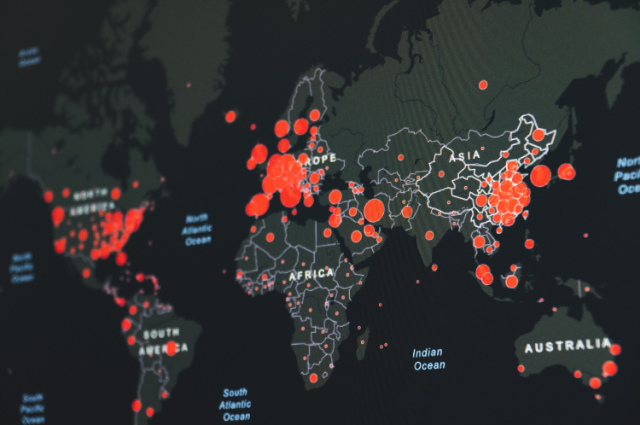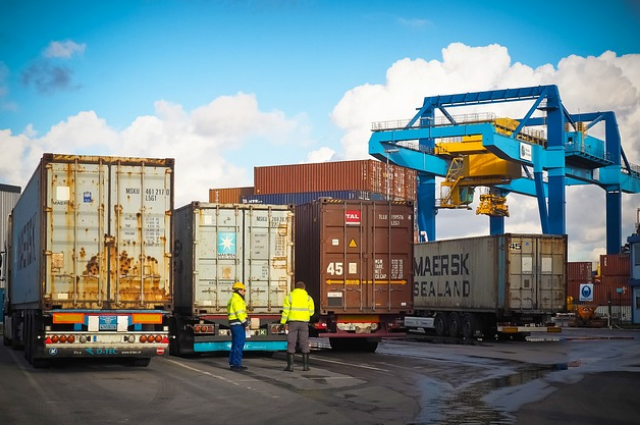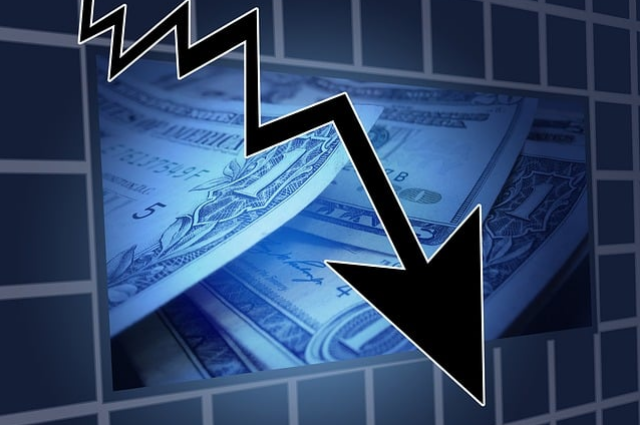Introduction
“The next 50 unicorns are going to be technologies that create something related to sustainability.”
— Larry Fink, BlackRock CEO

The COVID -19 pandemic has started to cause an unparalleled surprise to the financial market and undermined major advancements achieved in economic stability and the eradication of poverty worldwide. The pandemic's influence on businesses and the loss of existing production capacity might have had significant repercussions on both the short- and long-term economic expectations of advanced and emerging nations, particularly if this damage also hits the more productive corporations. The distribution of funds within regions and throughout sectors may be constrained by limitations on movement and business output, higher financing costs, prospective cross-exchange and currency disputes, and other factors. This could exacerbate economic misallocation and slow the growth of aggregate productivity.
To comprehend these reorganization channels and build effective regulations that can assist reduce the burden of the shocks and promote restoration, it is essential to evaluate the degree of the shock's effect, how it was distributed, the readjustment strategies firms selected, and the instability produced.
This article attempts to analyze the impact of Covid -19 in the business world and further delves into analyzing multiple countries like Brazil, Colombia, Argentina, and many others. The main reason for making such an analysis is to evaluate how covid-19 hit tourism, clothing, agriculture, fishing, restaurants, and construction businesses. I hope that readers will have a great read through this article and they will be able to come up with new insights by further reading of this article.
World Bank data on the impact of Covid 19 effect on Companies Around the World
As per World Bank data referring to one of the articles published on their website some statistics data for the period October 2020 to January 2021 to be noted is that one-fourth of companies around the world saw their sales fall by 50% and on average, sales dropped by 27%.

Photo by Martin Sanchez on Unsplash
Despite extremely unpredictable business changes the firms held onto their workers. It is to be noted around 65% of companies adjusted their payroll by reducing hours, and wages or granting leave. Due to these adjustments only 11% of companies laid off their workers. Adding more to this, not enough firms adopt digital solutions considering poorer countries and smaller firms. Adding more to this 34% of firms have increased their use of the Internet by social media platforms. Moreover, investments in new technology, software development, and digital solutions had 17% investments.
The major Key takeaway to be taken up is that the policy support is weak and it is required most in poorer countries and for smaller firms. In low-income countries, 1 in 10 companies received any type of public support. More than 70% of firms reveal a lack of understanding as the main barrier to accessing support in low-income countries. Not only this, around 1/5th of firms received public support because they were shocked due to Covid-19 and this suggested that efficient targets of fiscal resources could have been made in a better way.
Approximately 2.7 Million Companies were likely to close
The vast majority of businesses in the area had seen large income declines and were struggling to stay in operation because they were having a hard time paying their employees and fulfilling their financial responsibilities. They also had trouble getting finance for capital investments.

Information gathered from business chambers up to the beginning of June 2020 shows that:
- In Colombia, 96% of enterprises experienced a decline in sales (with 75% of them by more than 50%); 82% of formal firms couldn't get by on their terms for more than a month or two.
- In Brazil, 76% of industrial businesses have slowed down or discontinued operations, and 55% have experienced trouble obtaining finance for working capital.
- In April, 44% of manufacturing enterprises in Argentina have been unable to meet their payroll commitments (12.3% have been unable to pay employees' salaries), 38% have been unable to pay their utility bills, 48% were unable to pay their suppliers, and 57% failed to pay their taxes.
- In Chile, 37.5% of businesses cut workers between April and May, and 44% of businesses were in poor or critical financial shape, with the percentage climbing to 51% for micro businesses.
- In Uruguay, 59.4% of trading and service businesses had denied benefits to their staff under a policy that allows them to apply for unemployment insurance in this situation. This had a greater impact on businesses that offer hotel accommodations and meal services (81.5%). 41.2% of the businesses that took this action did so for more than 75% of the payroll.
- Hotels (-99.4%), construction (-86.4%), restaurants (-85.0%), retail trade (-83.8%), and tourism services (-78.7%) were the industries in Panama where revenue dropped the most.
- 50% of businesses in Central America will require four to nine months to return to pre-crisis turnover rates. Micro Businesses were worse off because it would take them from seven months to more than a year to do this.
Thus, the crisis was having the greatest impact on the industries that can become the most highly technologically advanced, which would make the structural issues facing the businesses of the region worse. This indicates that a progressive fundamental shift may occur without the implementation of proper measures to develop these businesses, which will negatively affect the businesses of the region.
Impact on Brazil's economy
In certain nations, the influence on the industrial structure was already apparent when comparing the performance of the first four months of 2020 to the corresponding period in 2019. Brazil's industrial output decreased by 8.2%. The aircraft industry was included in "other transport equipment," which also covers the vehicles and auto parts sectors, where the decline had been far more pronounced at 30.7% and 31.1%, respectively.
Impact on Mexico and Argentina
The first four months of the year saw a 10.9% decline in manufacturing output in Mexico, with the most negatively impacted industries being leather and footwear (-29.5%) and transportation equipment (-26.9%), whereas the food industry had a 2.5% increase. Argentina's industrial output decreased by 13.5%, with the automotive, auto parts, motorcycle, and electrical equipment industries faring the worst (-40.4%, - 37.8%, - 56.2%, and - 41.6%, respectively).
Additionally, several labor-intensive industries have experienced contractions that are significantly more severe than the industry average, such as textiles (-27.4%), apparel (-37.7%), and footwear (-40.3%). The food and beverage industry expanded by 1.5% in contrast.
Impact on Colombia and Peru
The total industrial decline in Colombia was 7.7%, with the worst results in leather and footwear (-37.8%) and cars and autoauto parts6.9%). The food business saw an increase (6.1%) in this area as well. Even worse was the situation in Peru, where production of capital equipment decreased by 47.9% and factory output by 21.4% in the first four months of the year. These early findings in many of the biggest countries in the area confirm the idea that technology-intensive industries would be particularly negatively impacted.
Global trade and supply chains were affected
Another mechanism by which COVID-19 had a negative effect on the world economic system was the distribution of network connections. The current crisis had hampered the operation of international supply chains, as data from many markets demonstrates. This had an impact on supply chains at all various levels.

Image by Hands off my tags! Michael Gaida from Pixabay
2020 saw a decline in global trade that was felt throughout the entire planet and in all economic sectors. Strong exporting nations had been affected by this (no output for domestic industries), as well as importers (lack of raw materials). The coronavirus pandemic was predicted by the World Trade Organization (WTO) to cause a 32% decrease in global trade this year. Due to a scarcity of parts, automobile companies were closing their doors. The majority of industrial sectors were experiencing this. Supplier disruptions were a problem for producers even of high-end products like Swiss timepieces.
Manufacturing businesses will incur higher operating costs as a result of the disruption to supply chains. Businesses were struggling, including Hasbro, a toy company that imports about 70% of its goods from China. It had become harder for a corporation like Hasbro to bring its goods onto the market as factories in China collapsed and transportation routes deteriorate.

Image by Gerd Altmann from Pixabay
75% of businesses report setbacks in their distribution networks, following the U.S. Institute for Supply Management. This poll also reveals that lead times had risen for many American businesses. Additionally, raw materials and finished goods were in short supply. The lack of available choices for shipping goods by air and ocean throughout the world makes everything worse.
The harm was actual. This calls into doubt the just-in-time approach used by many businesses, which strive to keep inventory to a minimum. For most managers, this trade-off involving effectiveness and resilience was obvious. As a risk-reduction strategy, it makes sense that some businesses choose to have locations (or suppliers) in multiple nations, even if this results in marginally increased prices.
Recovering initiatives were taken up around the world to resume business activity to normalcy

Image by Gerd Altmann from Pixabay
The weakening of the production structure magnifies the effects of the crisis. The region's production sector already had massive structural diversity before the pandemic, severely limiting its potential for economic development. These flaws are highlighted by the epidemic, which also heightens conflicts in the economy, society, and ecosystem. Continuous productivity growth, the creation of functional links, greater knowledge, and the creation and diffusion of breakthroughs are all crucial in the production sphere, and it is vital to prevent capacity degradation (Schumpeterian efficiency).
In this setting, manufacturing is strategically significant and must take the lead in driving growth and altering the productive matrix. To adjust the production structure, policies are needed. In other words, incentives other than those that already apply should encourage private businesses and the government to jointly undertake the required investments to diversify the economy, assure steady and ongoing growth, and prevent negative social and environmental effects.
The pandemic had pushed adjustments in workplace safety policies for employees, contractors, and clients, as well as in how they interact with one another. Social distancing had sped up the technology transition and propelled operations that aim to increase performance and effectiveness in businesses. Many businesses had been pushed to experiment, reevaluate how they conduct business, and alter their business strategies due to the increasingly complex environment and significant unpredictability. This entails developing the capacity to recognize in consumer expectations immediately and to make sure that the distribution system and activities being provided are adaptable to such adjustments. It also entails accepting the assumption that "health security" plays a significant role in enhancing goods and services.
Costs increase when safety standards are implemented within businesses. Rearranging work conditions, collective areas (such as canteens and cafeterias), and sanitary facilities will require investment from businesses. To leverage digital technology for integrated patterns of telecommuting and face-to-face engagements, they will probably need to upgrade and extend their gear. The fixed expenses of these investments increased. Additionally, as a consequence of the enhanced use of sanitary and cleaning goods, variable expenses would increase.
In comparison to the pre-crisis period, the decline in local and global demand will, at least in the short term, result in an expansion in a standby capacity, which will raise fixed costs per unit produced. To deal with this, businesses will need to continue looking for ways to increase production and efficiency. In both situations, policies are crucial in creating the impetus for businesses to produce goods with greater value added, alter their energy use, collaborate more (collective efficiency), and adopt new technology.
Conclusion
Businesses throughout the world had to respond quickly and forcefully to the pandemic's difficulties. Businesses need to look for and grab the advantages presented by the revival as humans enter the next stage. This entails carrying out an "after-action review" to gather information and observations on the pandemic's learning lessons and then reprioritizing to increase corporate value today and create strategy tolerance for the future. Businesses that adopt such actions now will be in a good position to take advantage of the opportunities emerging in the post-COVID-19 recovery and to keep dominating their markets as more predictability and security returns.
Businesses and nations should reevaluate their sensitivity to diverse and increasing interrelations that might amplify the impacts of outbreaks and other emergencies, beyond the usual worries about corporate operational continuity, employee protection, and market stability. Once COVID-19 gets controlled, much of the world is likely to revert to complacency and stay insufficiently prepared for the inevitable future breakout because of the panic and neglect cycle of pandemic preparations. Businesses will be best placed to react to and rebound from increasing global hazards if they engage in their strategy, organizational, and monetary flexibility.
References
- https://poonawallafincorp.com
- https://www.worldbank.org
- https://mitsloan.mit.edu
- https://repositorio.cepal.org
- https://www.mckinsey.com
- https://papers.ssrn.com
- https://www.pwc.com
- https://openknowledge.worldbank.org
